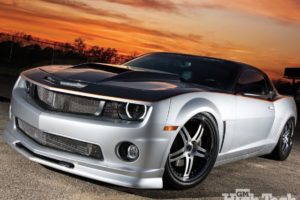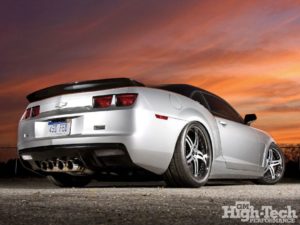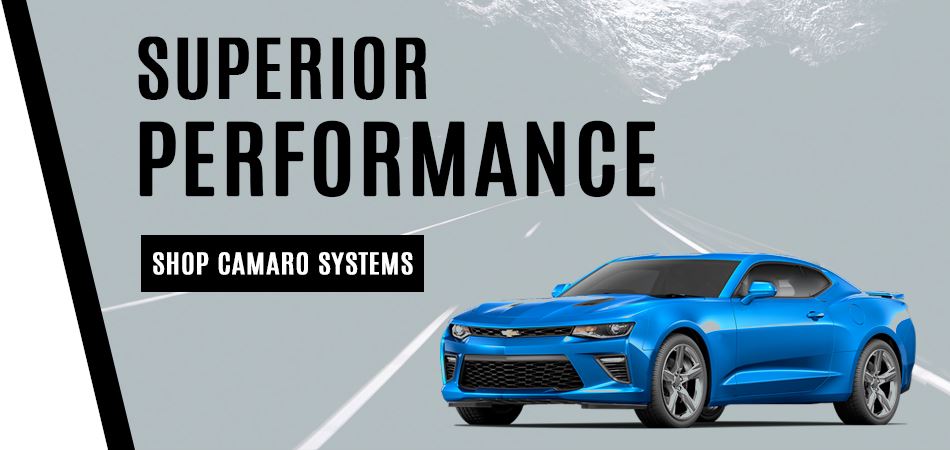2010 Chevrolet Camaro SS – Moter City Pride
A one-off turbocharged 2010 Camaro built from the ground up in Michigan; redefining the definition of “stance”
From the September, 2010 issue of gm high-tech performance
By Justin Cesler
Photography by Justin Cesler
 Some people call it the “X Factor,” a quality that can’t always be described but can always be noticed. For us, it is one of the main factors in choosing a feature car, it has to have something special, something almost greater than the sum of its parts that separates it from all other cars. In a hotel parking lot literally chock-full of custom 2010 Camaros, this “x factor” is what immediately attracted us to Rodrigo Olmedo’s 2010. The stance, the wheels, and the paint were almost spot-on perfect, and the turbo ls3 under the hood was certainly a welcome addition, but it was the entire combination working together that really made this Camaro a show-stopper.
Some people call it the “X Factor,” a quality that can’t always be described but can always be noticed. For us, it is one of the main factors in choosing a feature car, it has to have something special, something almost greater than the sum of its parts that separates it from all other cars. In a hotel parking lot literally chock-full of custom 2010 Camaros, this “x factor” is what immediately attracted us to Rodrigo Olmedo’s 2010. The stance, the wheels, and the paint were almost spot-on perfect, and the turbo ls3 under the hood was certainly a welcome addition, but it was the entire combination working together that really made this Camaro a show-stopper.
 “I found out that motorsports performance design (MPD) was looking for a car in order to make a one-off fiberglass hood and rear spoiler for a SEMA project. I called Eric Peters (owner of MPD) and set up a day to drop off the car. Eric also introduced me to James Newsome from CAI inductions who also needed a car for a couple of days; so off to him it went and the bug had bitten.” remember Rodrigo’s leap of faith in supporting his company? Well, it wasn’t but two weeks after buying his Camaro that he got a phone call to come back to work, GM was getting back on its feet and needed quality people back on its team. By the end of his first week, Rodrigo decided it was time to help other local businesses and shops, so he set out to build an all-out show car using as many local Detroit-based shops as possible. “i ended up over at victory racing engines (VRE) in Clinton township, Michigan, to see what i could come up with. I met with the owner Eric and head fabricator Mark Hayosh. We quickly sat down to discuss what I wanted, with the end result being a car that was extreme in performance but still very driveable.”
“I found out that motorsports performance design (MPD) was looking for a car in order to make a one-off fiberglass hood and rear spoiler for a SEMA project. I called Eric Peters (owner of MPD) and set up a day to drop off the car. Eric also introduced me to James Newsome from CAI inductions who also needed a car for a couple of days; so off to him it went and the bug had bitten.” remember Rodrigo’s leap of faith in supporting his company? Well, it wasn’t but two weeks after buying his Camaro that he got a phone call to come back to work, GM was getting back on its feet and needed quality people back on its team. By the end of his first week, Rodrigo decided it was time to help other local businesses and shops, so he set out to build an all-out show car using as many local Detroit-based shops as possible. “i ended up over at victory racing engines (VRE) in Clinton township, Michigan, to see what i could come up with. I met with the owner Eric and head fabricator Mark Hayosh. We quickly sat down to discuss what I wanted, with the end result being a car that was extreme in performance but still very driveable.”


